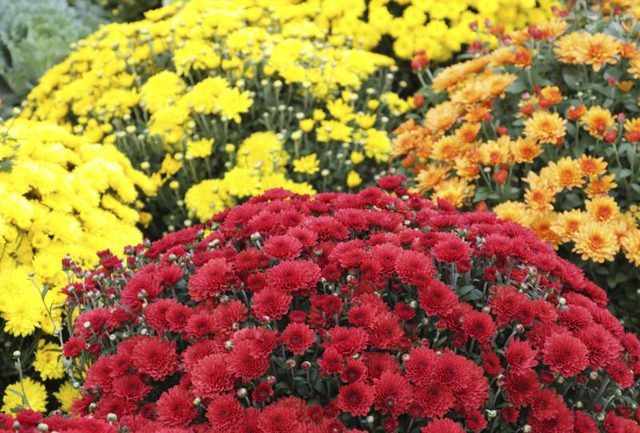Bulbs
Flower Basics
Flower Beds & Specialty Gardens
Flower Garden
Garden Furniture
Garden Gnomes
Garden Seeds
Garden Sheds
Garden Statues
Garden Tools & Supplies
Gardening Basics
Green & Organic
Groundcovers & Vines
Growing Annuals
Growing Basil
Growing Beans
Growing Berries
Growing Blueberries
Growing Cactus
Growing Corn
Growing Cotton
Growing Edibles
Growing Flowers
Growing Garlic
Growing Grapes
Growing Grass
Growing Herbs
Growing Jasmine
Growing Mint
Growing Mushrooms
Orchids
Growing Peanuts
Growing Perennials
Growing Plants
Growing Rosemary
Growing Roses
Growing Strawberries
Growing Sunflowers
Growing Thyme
Growing Tomatoes
Growing Tulips
Growing Vegetables
Herb Basics
Herb Garden
Indoor Growing
Landscaping Basics
Landscaping Patios
Landscaping Plants
Landscaping Shrubs
Landscaping Trees
Landscaping Walks & Pathways
Lawn Basics
Lawn Maintenance
Lawn Mowers
Lawn Ornaments
Lawn Planting
Lawn Tools
Outdoor Growing
Overall Landscape Planning
Pests, Weeds & Problems
Plant Basics
Rock Garden
Rose Garden
Shrubs
Soil
Specialty Gardens
Trees
Vegetable Garden
Yard Maintenance
How to Plant Mums
How to Plant Mums. Often associated with seasonal plantings, many mums (Chrysanthemum cvs. or Dendranthema cvs.) deserve garden spots year-round. Depending on variety, garden mums may be hardy from U.S. Department of Agriculture plant hardiness zones 3 through 9, so planting varieties suited to your climate is important. Many varieties struggle...

Often associated with seasonal plantings, many mums (Chrysanthemum cvs. or Dendranthema cvs.) deserve garden spots year-round. Depending on variety, garden mums may be hardy from U.S. Department of Agriculture plant hardiness zones 3 through 9, so planting varieties suited to your climate is important. Many varieties struggle with high humidity and heat, while others succumb to cold -- most florist mums rarely survive outdoors. But with climate-appropriate hardy mums, you can enjoy the fruits of your plantings year after year.
When to Plant
Mums make their biggest splash with late-summer and autumn blooms, but late spring is the best time to plant these beauties. Wait until all danger of spring frost has passed to plant new mums or transplant existing ones. Spring planting allows mums to settle in and develop vigorous root systems before winter arrives. Fall planting requires more planning. Fall-purchased mums are usually in full bloom. The abundant flowers deplete the plant's energy and leave little for new root development. In northern climates, plant hardy mums at least six to eight weeks before the ground freezes so they can develop roots by the time winter arrives.
Site, Sun and Soil
Planting sites determine how well mums survive. Sheltered southeastern and southern exposures provide welcome protection. Six hours of direct, daily sun encourages abundant blooms and sturdy stems. Choose a spot with more sun in northern climates and at least four hours in warmer climates. Midday shade helps prolong mum blooms in hot climates, but too much shade leaves stem strength and flowers lacking. Day length impacts flowering for most garden mums, so choose sites where street lights and artificial lighting won't affect the plants. Mums don't fuss about soil type, but good air circulation and excellent soil drainage are essential to health and hardiness. Soil pH near 6.5 is ideal.
Preparation and Planting
Improve your site's drainage, aeration and fertility with generous organic matter and gentle fertilizer. For spring plantings, layer 2 to 3 inches of organic compost over the planting bed with 1 to 1 1/2 pounds of slow-release, 5-10-5 fertilizer per 100 square feet. Mums have shallow roots, so work the compost and fertilizer into the soil about 6 inches deep. For fall plantings, skip the fertilizer. Dig holes twice as wide and slightly shallower than the containers or root balls on transplants. This allows for settling and plentiful oxygen for shallow roots. Planting too deep encourages root disease. Allow space for each mum's mature size. Some mature into shrublike bushes several feet high and wide, so plant accordingly.
Watering and Winterizing
Water newly planted spring mums so their shallow roots are never soggy, yet never dry out. Mums need about 1 inch of weekly water. During hot weather, drought or full bloom, they need more. A 2- to 3-inch layer of organic mulch helps retain moisture. Mulch and water fall-planted mums the same way, then reduce watering as winter approaches. Avoid excess moisture that could turn to ice. Leave stems uncut in cold climates, and mound up to 8 inches of soil over plants for added protection. Once the ground freezes, add 2 to 4 inches of leaves. This helps keep frozen soil from thawing and refreezing and helps fall-planted mums withstand winter.